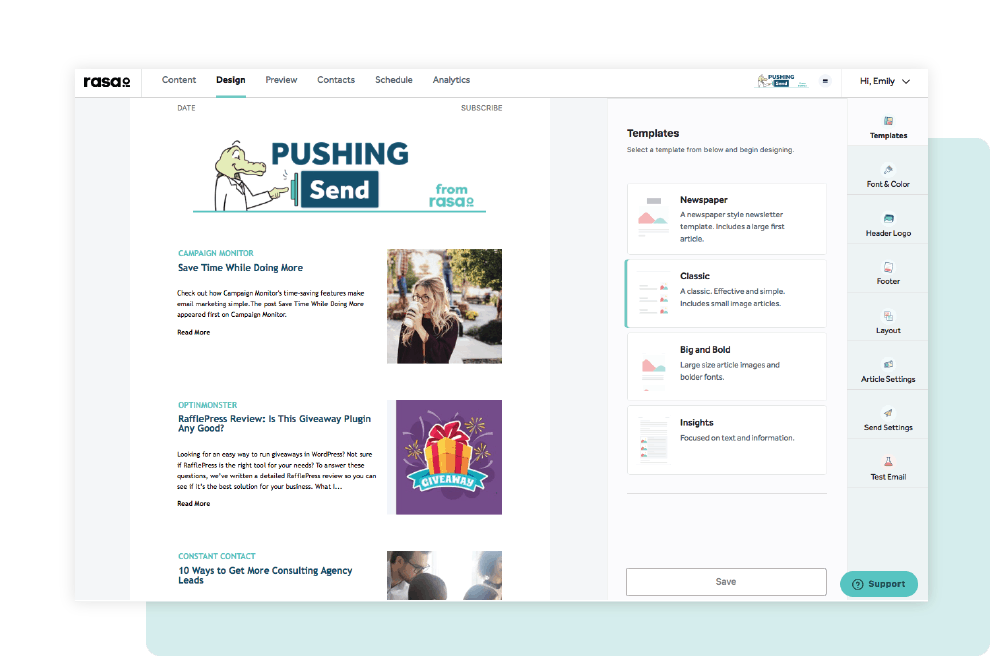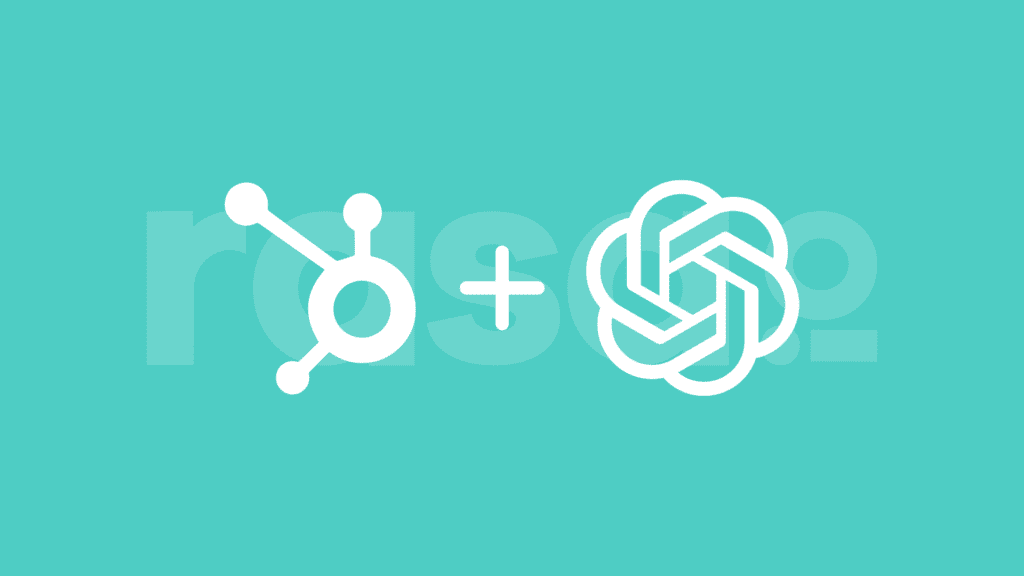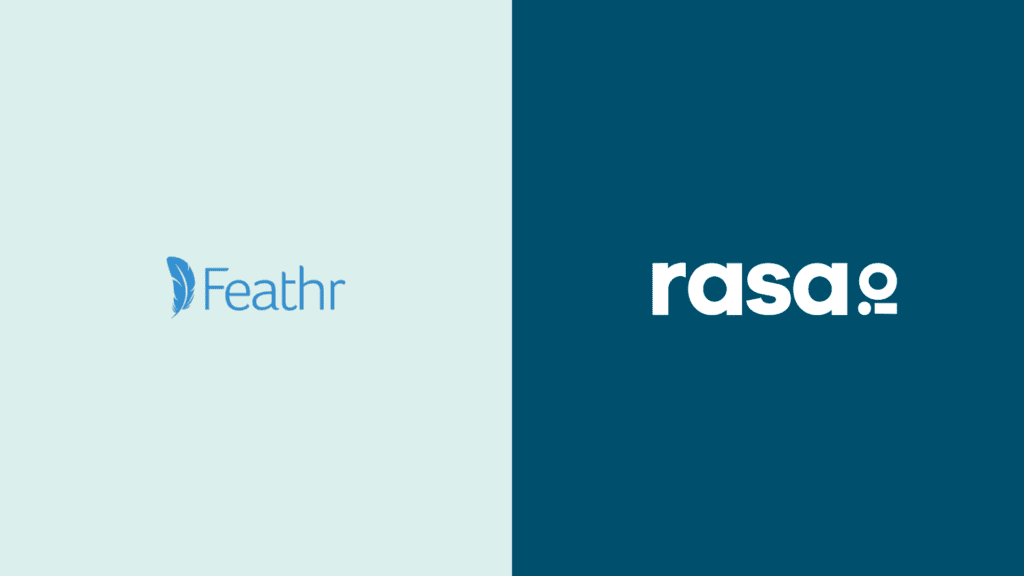In the ever-evolving world of email marketing, where newsletters are the linchpin connecting brands with their audiences, the art of naming these digital publications stands as a critical and often underestimated facet of success. This article takes you on an exploration into the intricate and fascinating realm of newsletter naming. We’ll unveil the magic behind crafting memorable and impactful names, delving into alliteration, the psychology of words, tone and style, the essence of simplicity, catchy acronyms, and the tailored approach for niche audiences. As we navigate this territory, you’ll discover that a newsletter’s name is not just a label but a key that unlocks readers’ curiosity and engagement.
The Art of Alliteration: Using Sound to Craft Memorable Names
Alliteration, the poetic device where the first consonant sound repeats in a sequence of words, can work wonders in newsletter naming:
- Sound Symbolism: Words that sound like what they mean can create a profound impact. Alliteration can infuse your newsletter’s name with symbolism, enhancing its resonance with readers.
- Consider “Corporate Collaborator Chronicle” for a newsletter focused on business partnerships and collaborations.
- Memorable Melodies: Just as catchy tunes are memorable, newsletter names with alliterative qualities create a delightful melody that lingers in the mind, beckoning readers back for more.
- “Triumphic Tech Trends” not only implies success and advancement, is also specific to the technology sector, making it appealing to a B2B audience.
- Stylistic Versatility: Alliteration can add flair to your newsletter’s name, whether you’re aiming for sophistication, whimsy, or humor. Keep in mind that the same technique can manifest in various styles.
-
- Sidecar Scoop Newsletter, on the other hand, “Sidecar Scoop” gives a catchy quip while keeping its product definition “Newsletter” on the title.
Imagine a newsletter named “Tech Tidbits” or “Marketing Maven.” In these instances, the alliteration not only adds a rhythmic quality to the names but also makes them catchy and memorable. The repetition of consonant sounds creates a delightful melody that lingers in readers’ minds, beckoning them back for more.

Automate Your Newsletter Just Like The Sidecar Scoop!
Save time curating so you can spend your efforts on the “bajillion” other things you need to do.
The Psychology of Words: How Language Impacts Newsletter Names
Language is a powerful tool in shaping perceptions and evoking emotions, and it plays a pivotal role in a good newsletter name:
- Semantics and Connotations: The choice of words goes beyond their literal meaning, delving into the emotional and psychological connotations they carry.
- For a B2B finance-focused newsletter, “Capital Clarity” conveys precision and clear insights, resonating with professionals seeking financial understanding.
- Cultural Nuances: Words can hold different cultural significance. Investigate how understanding these nuances is critical to creating names that resonate with a diverse audience.
- Words can hold different cultural significance, and understanding these nuances is critical for creating B2B names that resonate with a diverse audience. “Global Genesis Gazette” could be suitable for a B2B newsletter reaching an international audience, emphasizing a worldwide perspective.
- Word Length and Cadence: The rhythm and flow of words are equally important. With your team, ensure that you discuss how the cadence of your newsletter’s name can influence how it’s received and remembered.
- “Innovate Insight” combines brevity with a forward-thinking vibe, making it suitable for a B2B innovation-focused newsletter.
Consider the difference between “Eco-Friendly Explorations” and “Green Ventures.” The alliteration in the latter adds a poetic touch, making the name more memorable and evoking a positive emotional response to your target audience. In this way, alliteration becomes a linguistic tool that goes beyond literal meanings, influencing the emotional and psychological connotations of words.
Tip: When sharing your newsletter on social media, observe the reactions it elicits. Likes, shares, and comments provide invaluable insights. There is no single solution that fits everyone; therefore your newsletter name must resonate with both subscribers and potential audiences alike.
Finding Your Newsletter’s Voice: Tone and Style in Name Selection
Every email newsletter has its distinct voice, and the name should reflect that. Leveraging Squadhelp’s naming solutions can help you find the perfect name that resonates with your newsletter’s unique character.
- Tone Alignment: The tone, whether formal, conversational, or playful, should align with the content of your newsletter. Often, this harmonious balance is achieved in name selection.
- This harmonious balance is achieved in name selection. For instance, “Insight Inquirer” suggests a formal and informative tone, ideal for a B2B publication providing valuable industry insights.
- Reader Connection: The name is the first point of connection with readers. Your newsletter’s name can establish a relationship, invoking curiosity or trust, depending on your goals.
- Your newsletter’s name can establish a relationship, invoking curiosity or trust, depending on your goals. Consider “Trusted Trend Tracker” where the word “Trusted” establishes a sense of reliability and security, essential for building trust with B2B readers.
- Brand Consistency: Maintaining brand consistency is vital in business. With your team, discuss ensuring that your newsletter’s name harmonizes with your brand’s identity.
- With your team, discuss ensuring that your newsletter’s name harmonizes with your brand’s identity. For example, looking at “Oracle,” they maintain a powerful brand voice that resonates with business professionals seeking industry insights.
Picture a newsletter titled “Corporate Chronicles” or “Playful Perspectives.” Here, alliteration adds flair to the names, aligning them with the tone and style of the content. Whether aiming for sophistication, whimsy, or humor, the versatile nature of alliteration allows it to enhance the overall character of the newsletter’s name.
The Power of Simplicity: Why Less Is More in Newsletter Naming
In a world cluttered with information, simplicity stands out and is more easily remembered:
- Brevity and Clarity: Concise and clear names cut through the noise, making a solid and immediate impact.
- Concise and clear names cut through the noise, making a solid and immediate impact. For instance, the use of “SwiftStrat” creates a brief and clear name, suggesting a fast-paced and strategic newsletter that sparks interest in the B2B community.
- Ease of Pronunciation: Names that are easy to pronounce become shareable and evoke a sense of familiarity.
- Consider the simple and repeated “Z” sound in “ZenZone,” enhancing the ease of pronunciation and making it accessible and inviting for a B2B audience.
- Visual Aesthetics: A simple name can be visually pleasing and memorable. In this situation, visual aesthetics and simplicity go hand in hand.
- A simple name can be visually pleasing and memorable in the B2B context. For instance, the pairing of “EconoEssence” not only creates a visually balanced name but also suggests a focus on capturing essential and economical elements in the content.
Consider the simplicity and impact of a newsletter named “Quick Quotient” or “Simple Science.” The brevity and clarity of these names cut through the informational clutter, making an immediate and lasting impression. In a world inundated with information, simplicity stands out and is more easily remembered by your subscribers.
Memorable Acronyms: Creating Catchy Names for Your Newsletter
Acronyms condense long phrases into memorable snippets. They are versatile tools for newsletter naming:
- Significant Abbreviations: Create acronyms that encapsulate the essence of your newsletter’s content or purpose.
- Good companies create good acronyms that encapsulate their ideals in their newsletter, like TREW or Triangle Real Estate Weekly.
- Reader Engagement: Acronyms can pique curiosity and engagement. Make your readers eager to decipher the meaning behind the letters.
- The acronym acts as a playful challenge, inviting readers to unravel the mysteries within the content, like the RIDDLE report, which stands for Revelations, Insights, Discoveries, and Diverse Experiences.
- Brand Representation: Acronyms can be powerful representations of your brand or message.
- The acronym emphasizes a sense of unity between the content and the reader, positioning the newsletter as a personalized and inclusive experience like UNITY Express, which Stands for Updates, News, Insights, Trends, and You.
Naming for Niche Audiences: Tailoring Your Newsletter for Success
Niche audiences require a tailored approach:
- Audience Understanding: Understanding niche audiences’ specific needs and preferences is paramount. This knowledge shapes your newsletter’s name.
- A B2B newsletter named “TechThinkTank” is tailored for a niche audience seeking technological insights and discussions
- Community Building: Niche newsletters often foster communities. Names can be crucial in community building and fostering a sense of belonging.
- For example, “InvestorInsights Network” is designed for a B2B community interested in financial investments.
- Specialized Terminology: Some niches have their technical terminology. Incorporating these terms can create an immediate connection with readers.
- CryptoInsider combines both “crypto” and “Insider”, using industry-specific terminologies to signal that the newsletter provides inclusive insights into cryptocurrency.
Imagine a newsletter with the acronym “FAST” (Finance and Stock Trends). Acronyms condense complex ideas into memorable snippets, creating names that not only capture the essence of the content but also pique the reader’s curiosity. This way, acronyms become powerful tools for crafting catchy and engaging newsletter names.
Conclusion
The newsletter naming blueprint, as unveiled in these sections, is a symphony of linguistic artistry, psychological insight, style alignment, simplicity, acronym versatility, and niche tailoring. In email marketing, where attention spans are fleeting, and competition is fierce, a newsletter’s name emerges as a beacon that guides readers into its content. As businesses, creators, and communicators craft their digital publications, they will find that the name is not just an identifier but a promise of value, a key that unlocks the gateway to knowledge, entertainment, or connection. In this journey through the intricate world of newsletter naming, one thing becomes evident: every name is a story, and every story is an invitation to explore, learn, and engage.












